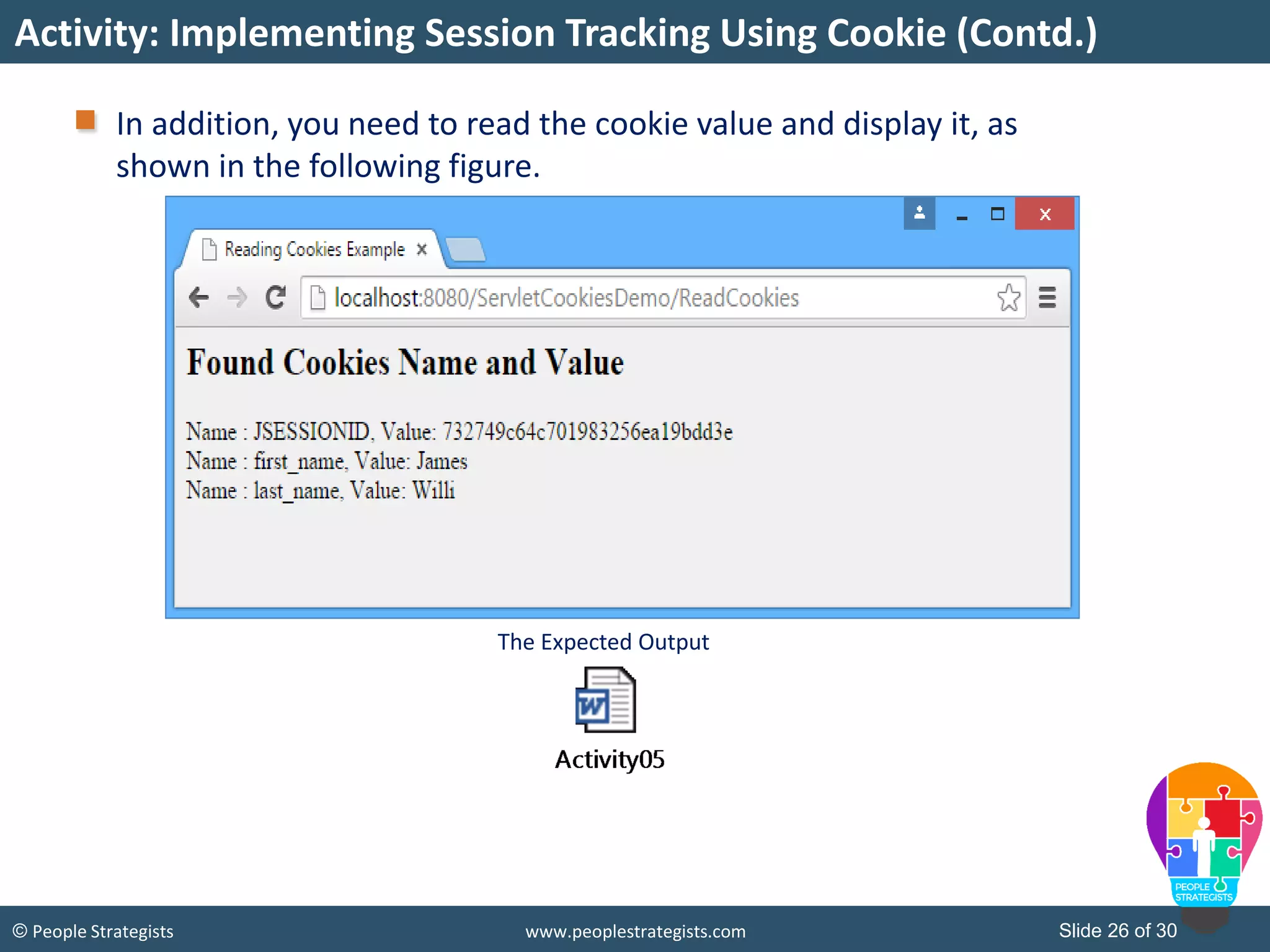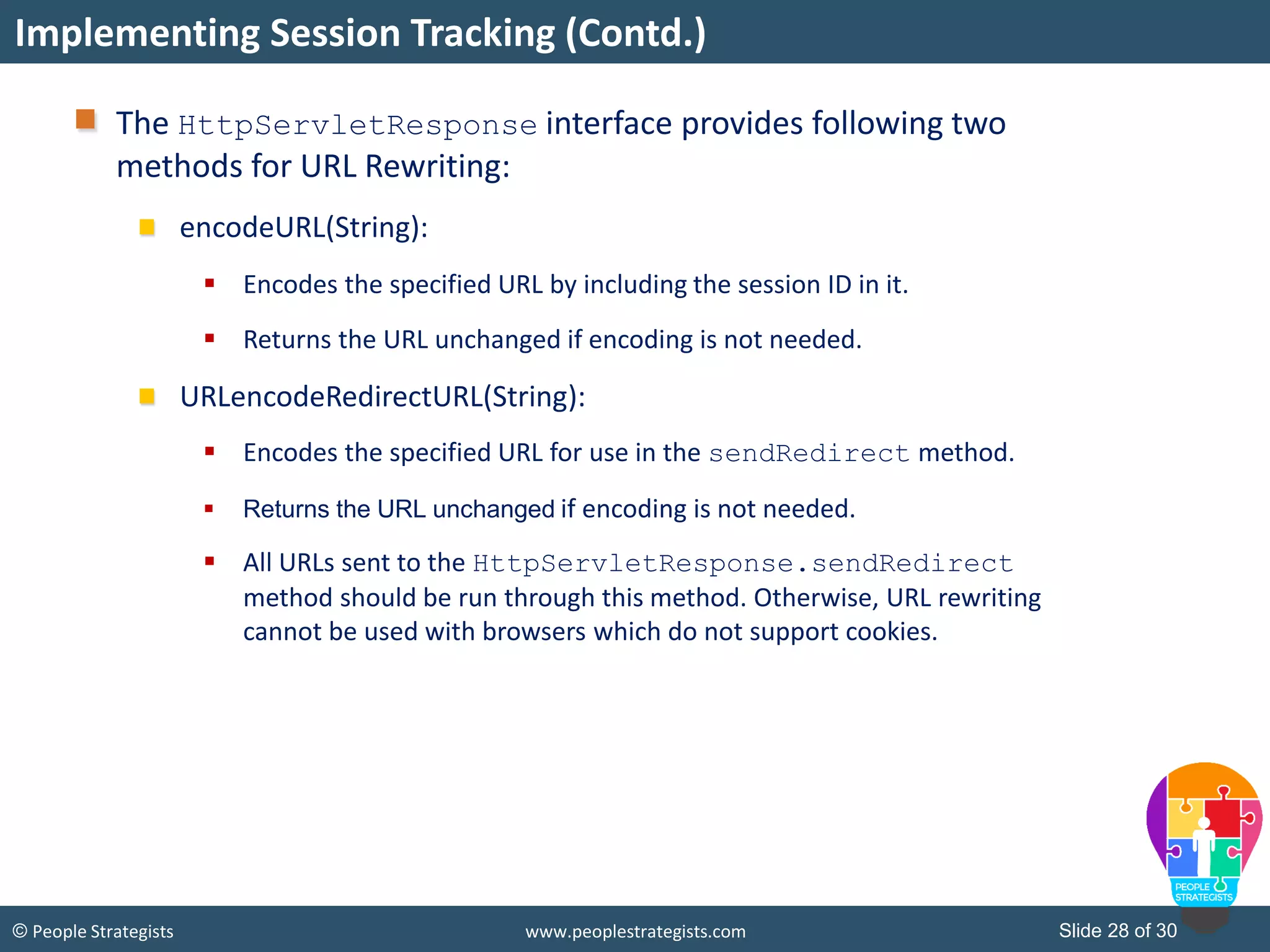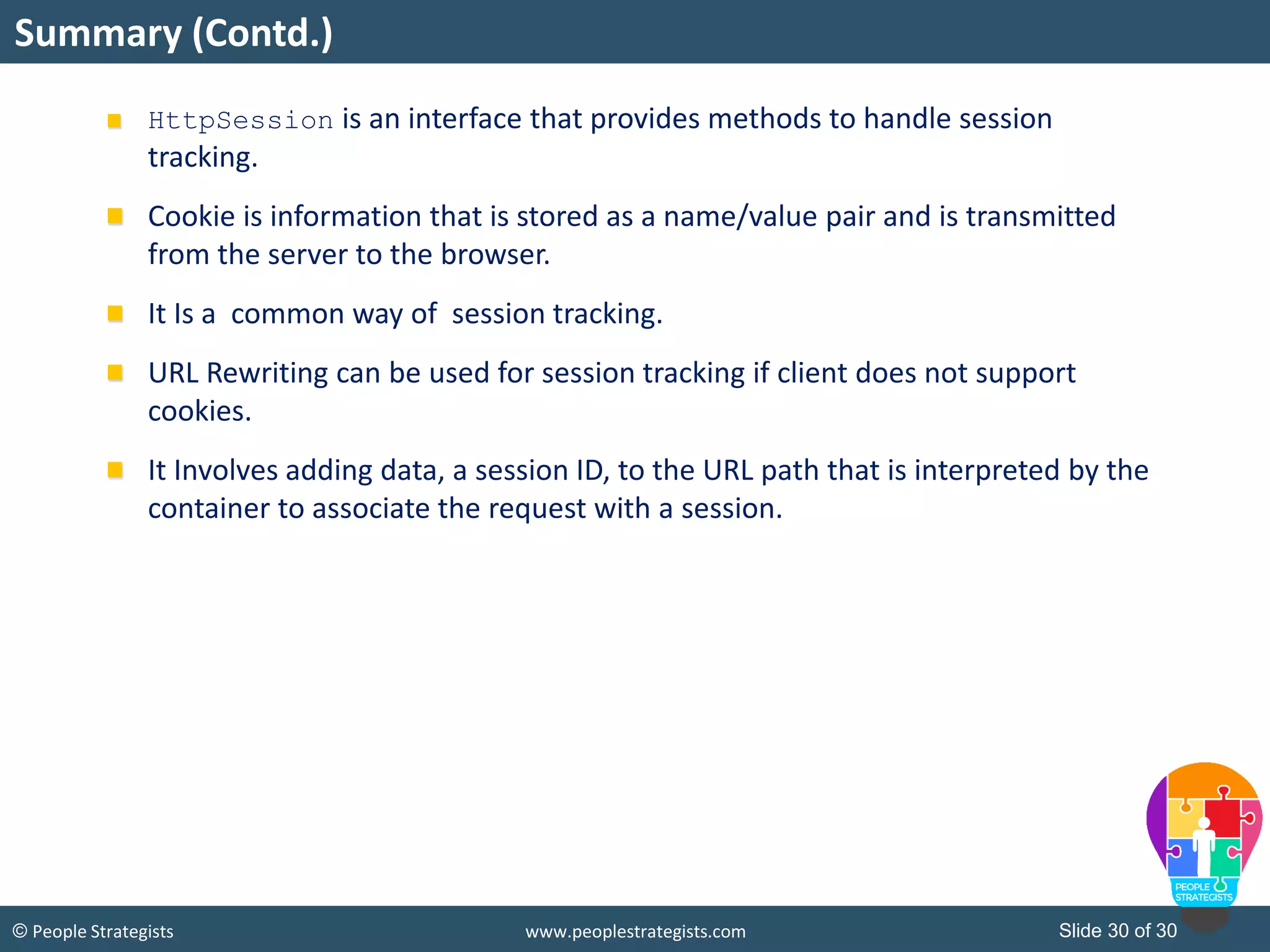This document discusses working with servlets and session tracking in Java. It explores the ServletConfig and ServletContext interfaces, and how to implement session tracking using HttpSession, cookies, and URL rewriting. The objectives are to learn how to access configuration information from servlets, set and get attributes in the servlet context, and maintain state across HTTP requests using different session tracking mechanisms.
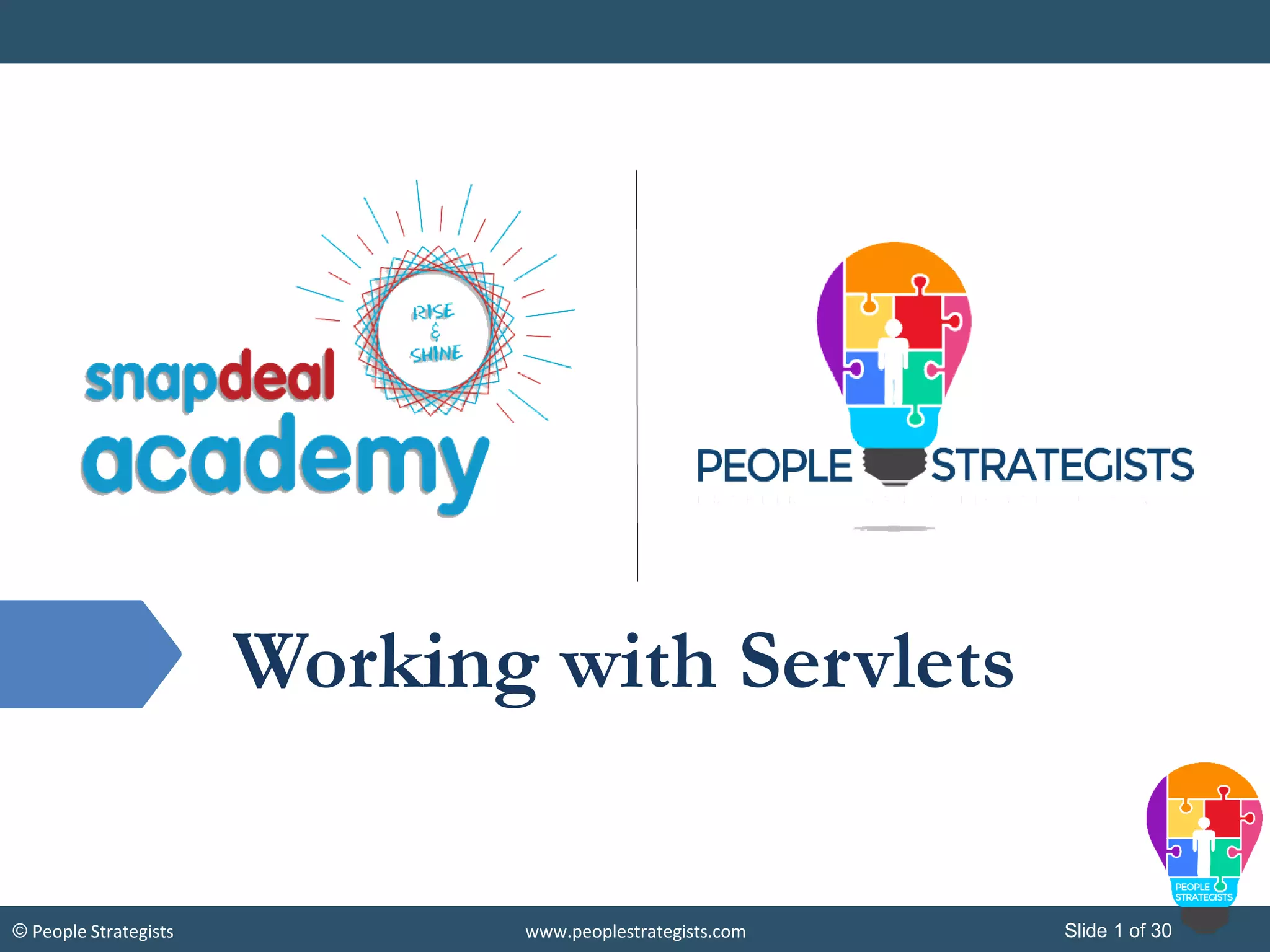
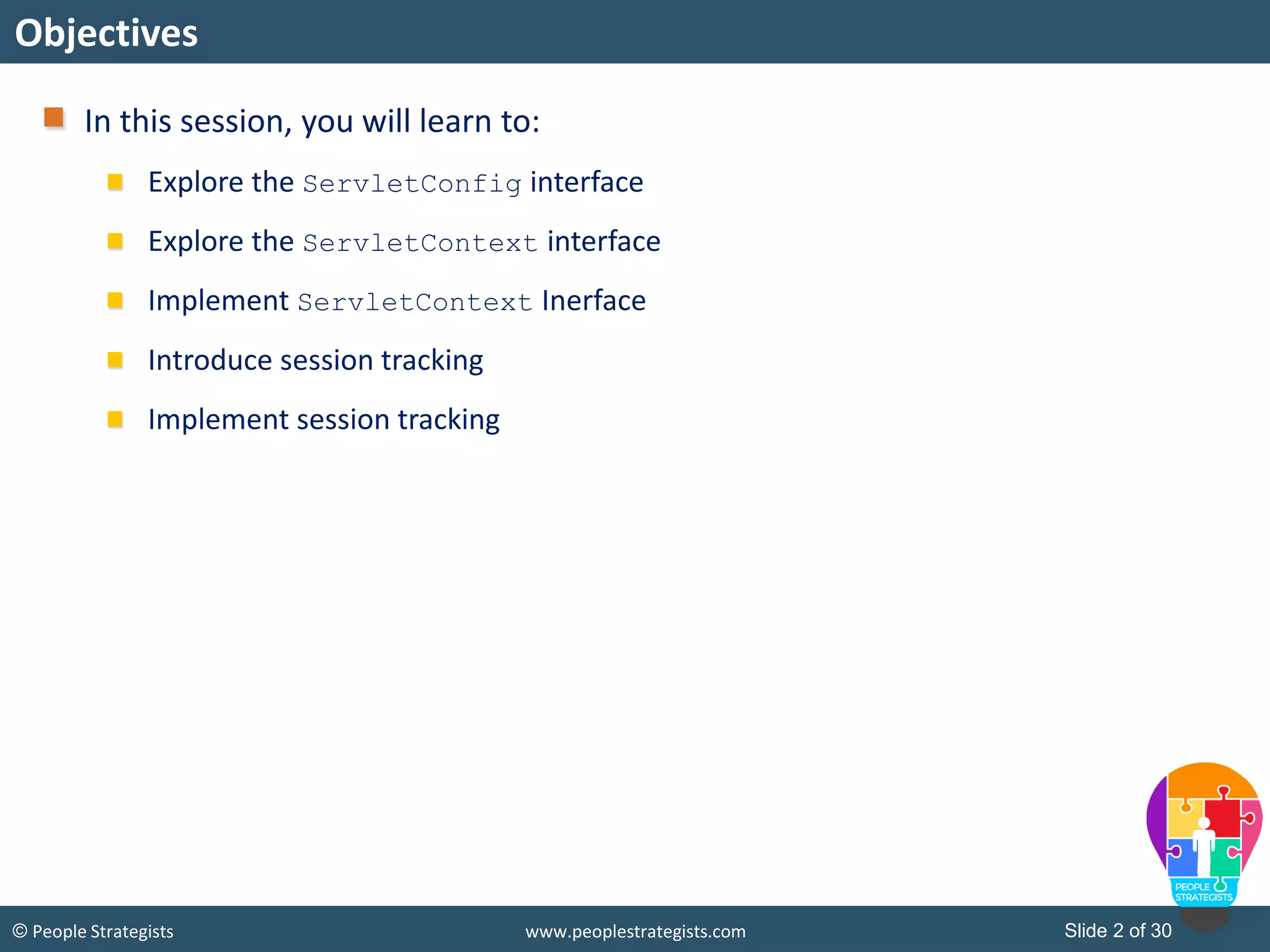
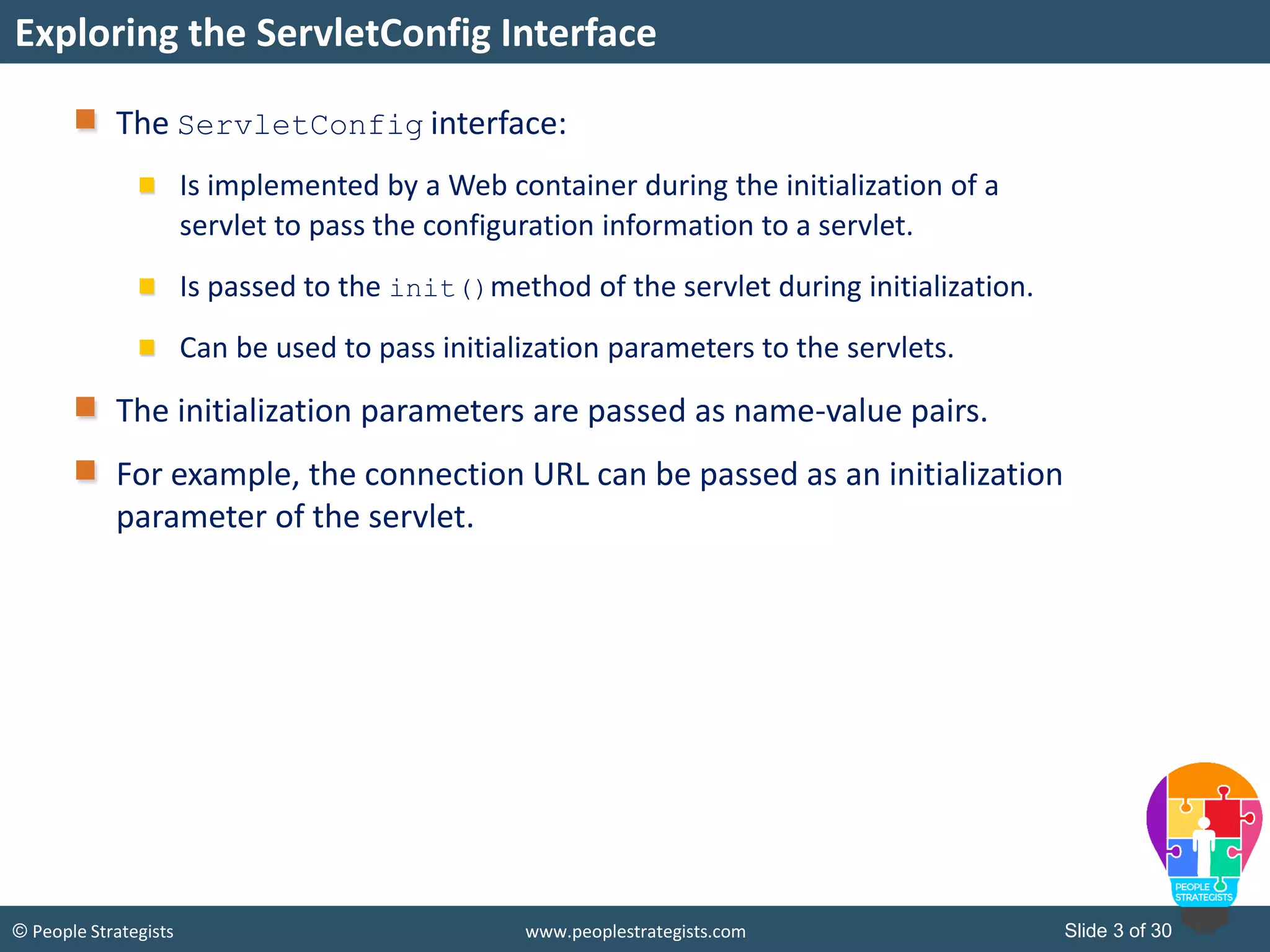
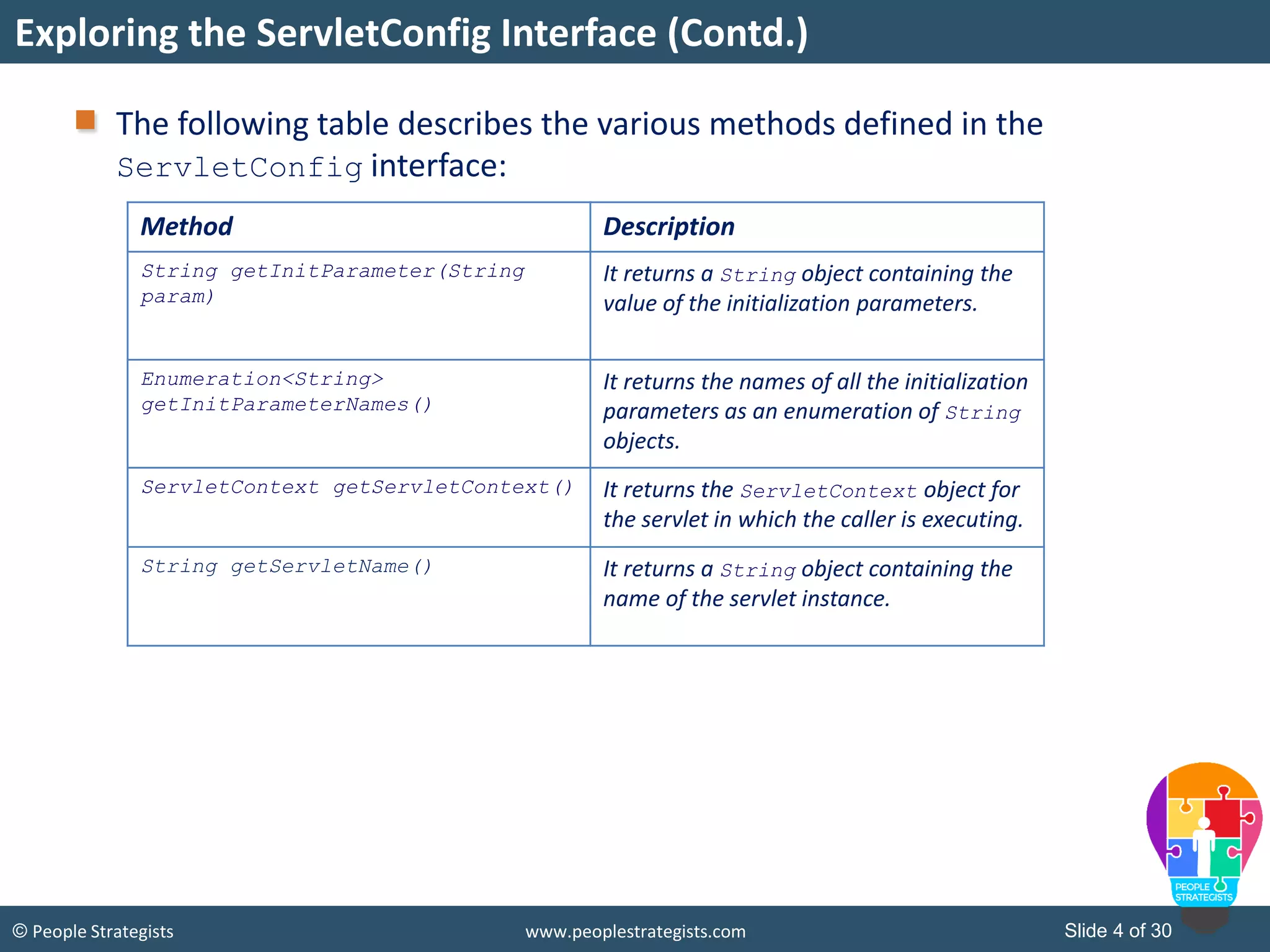
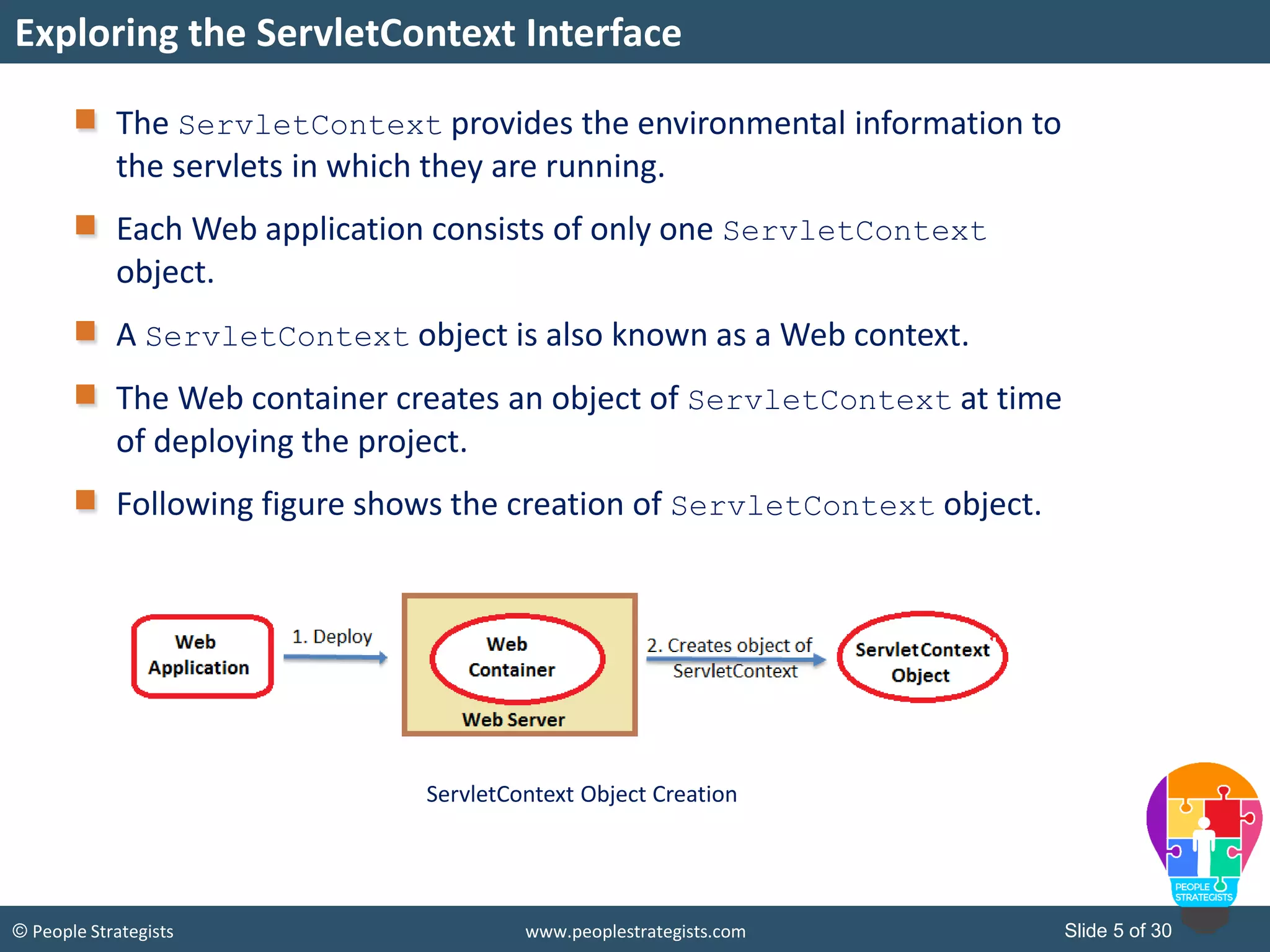

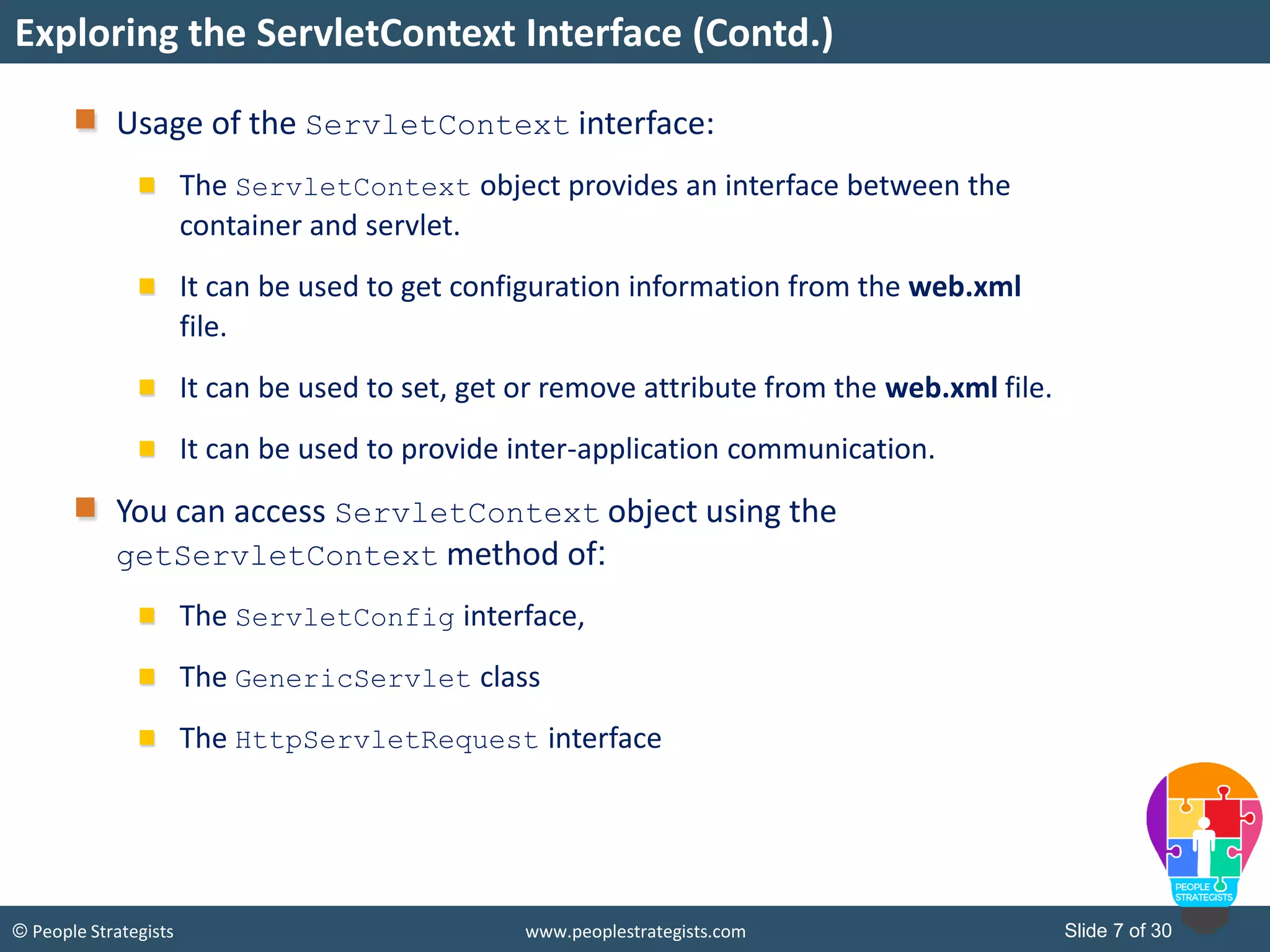
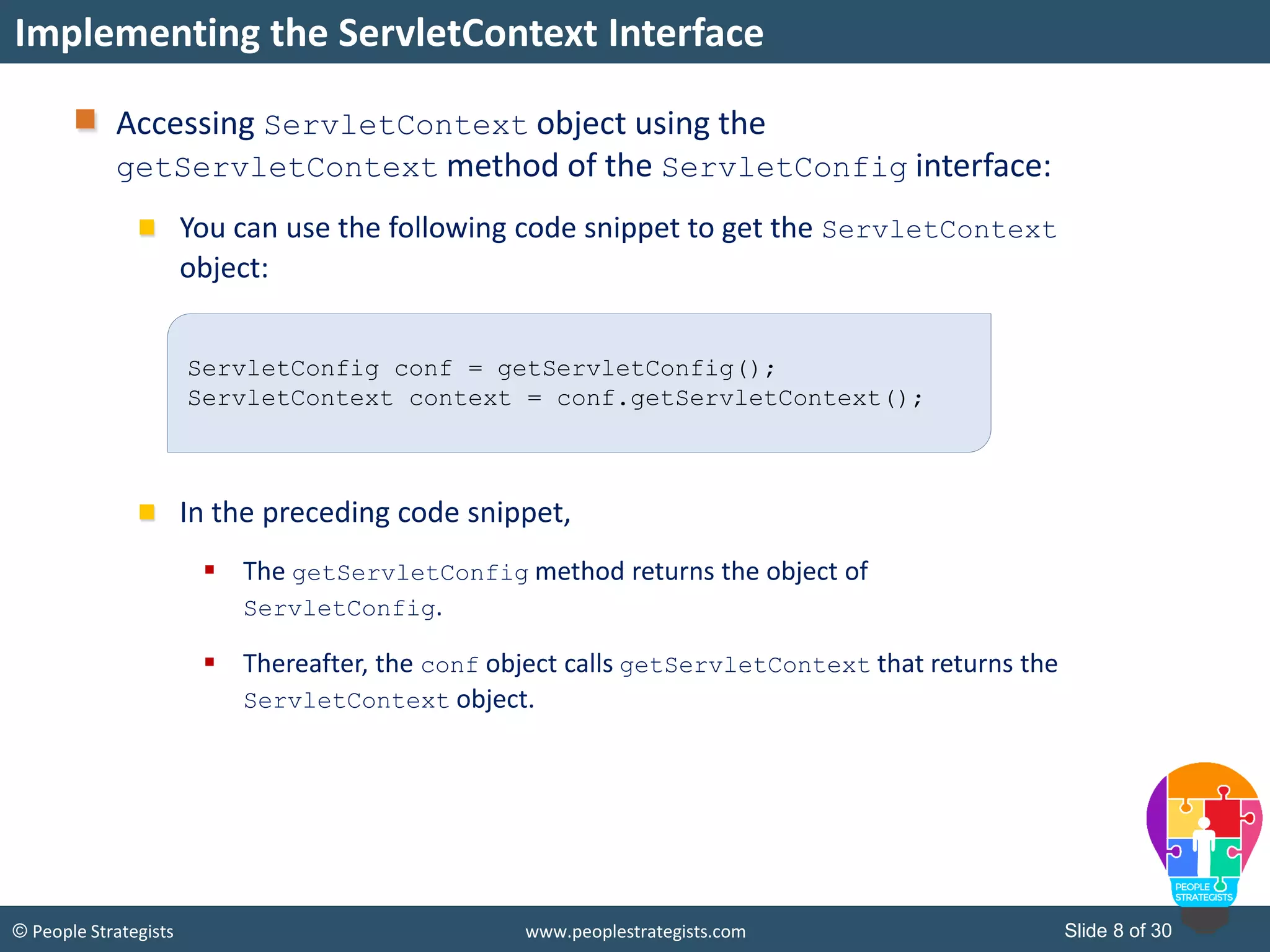
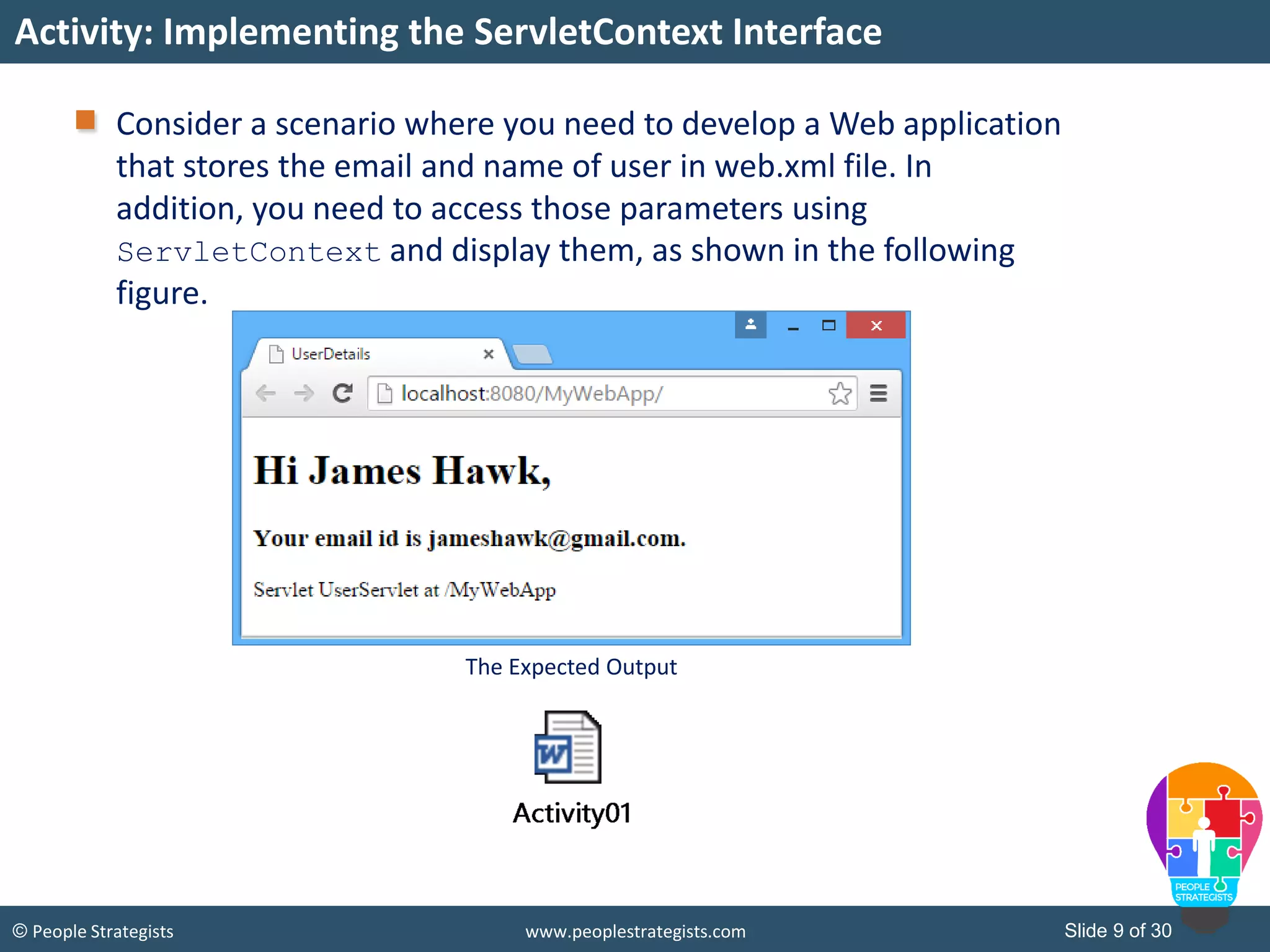
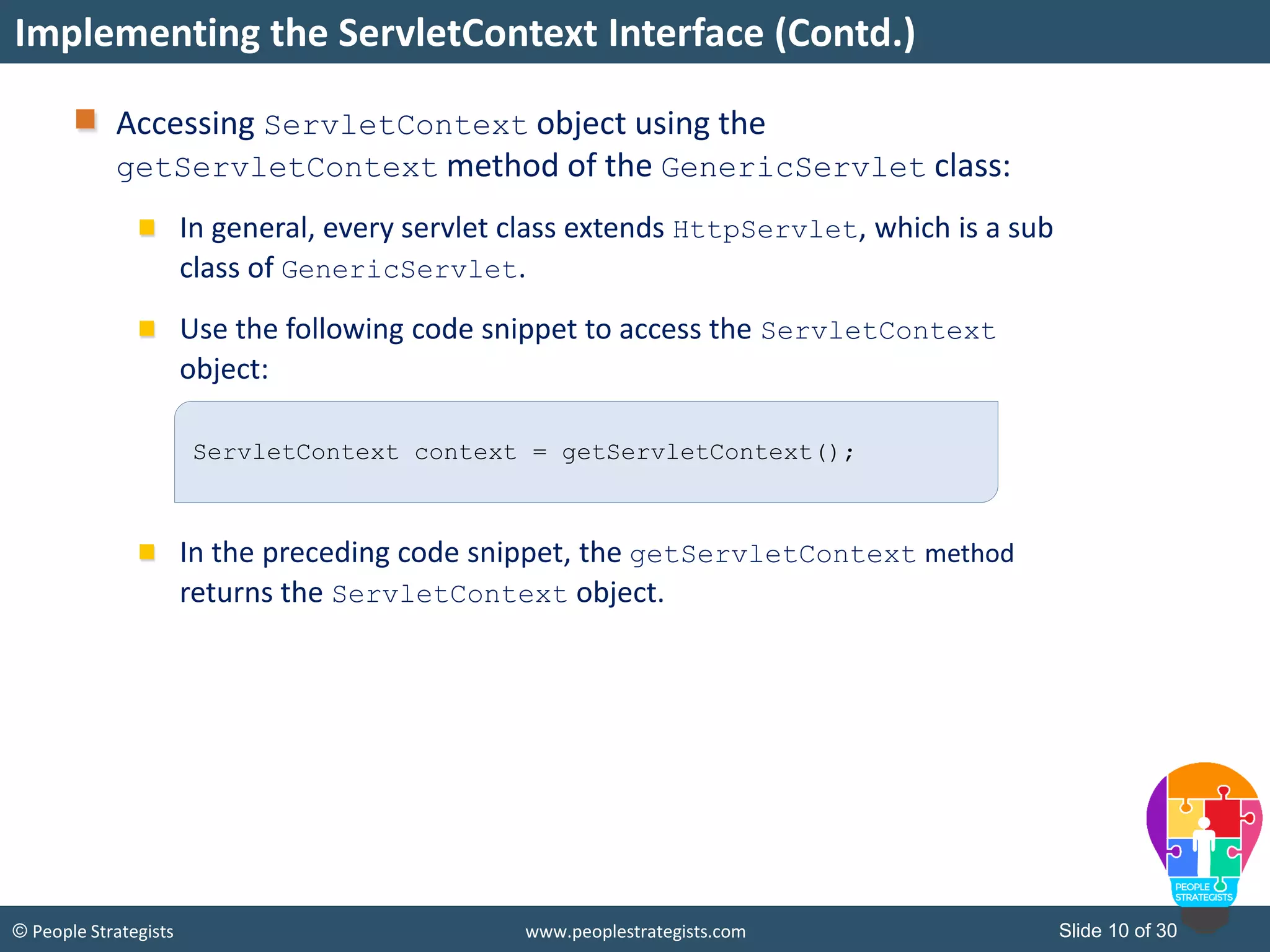

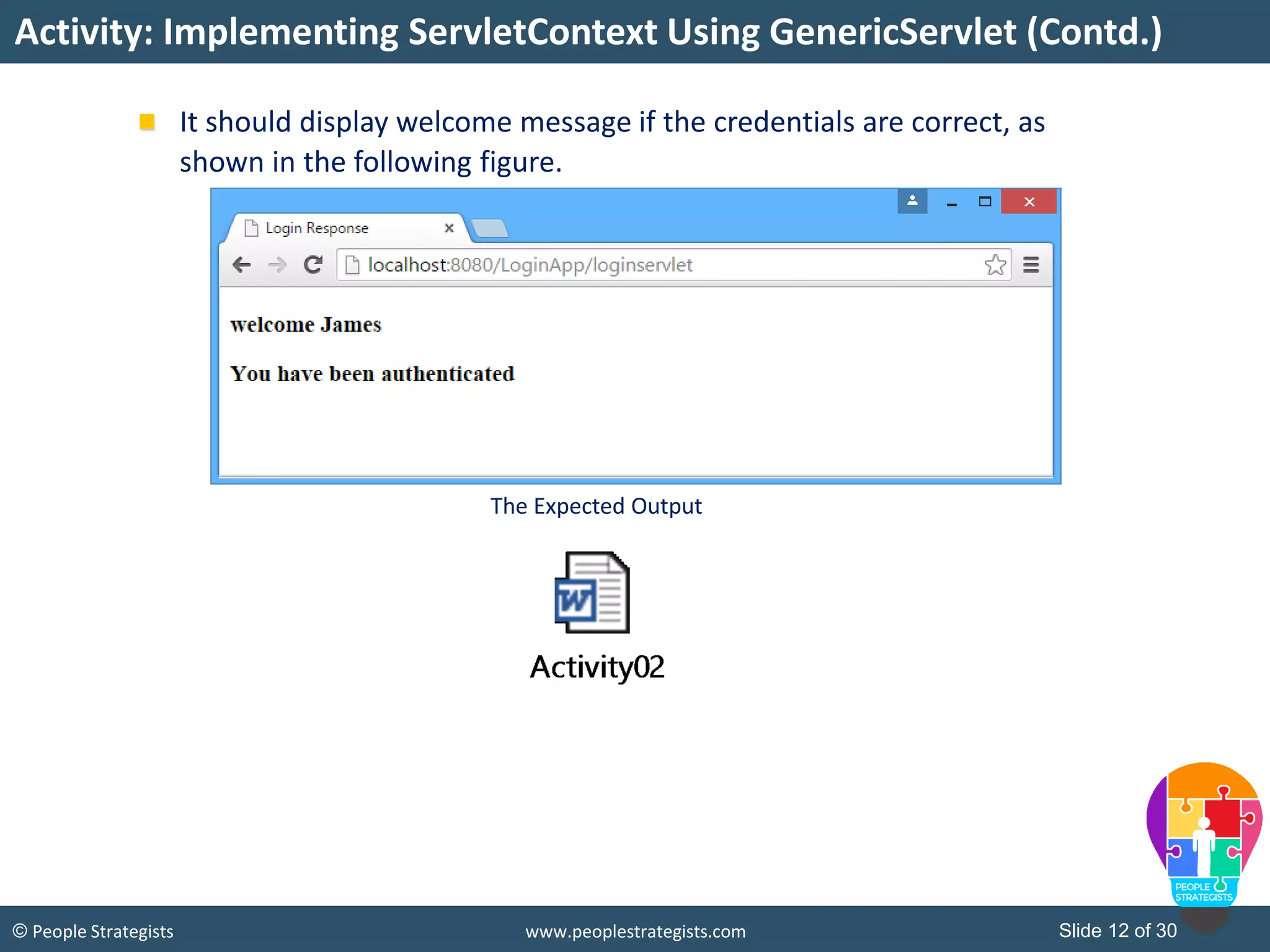
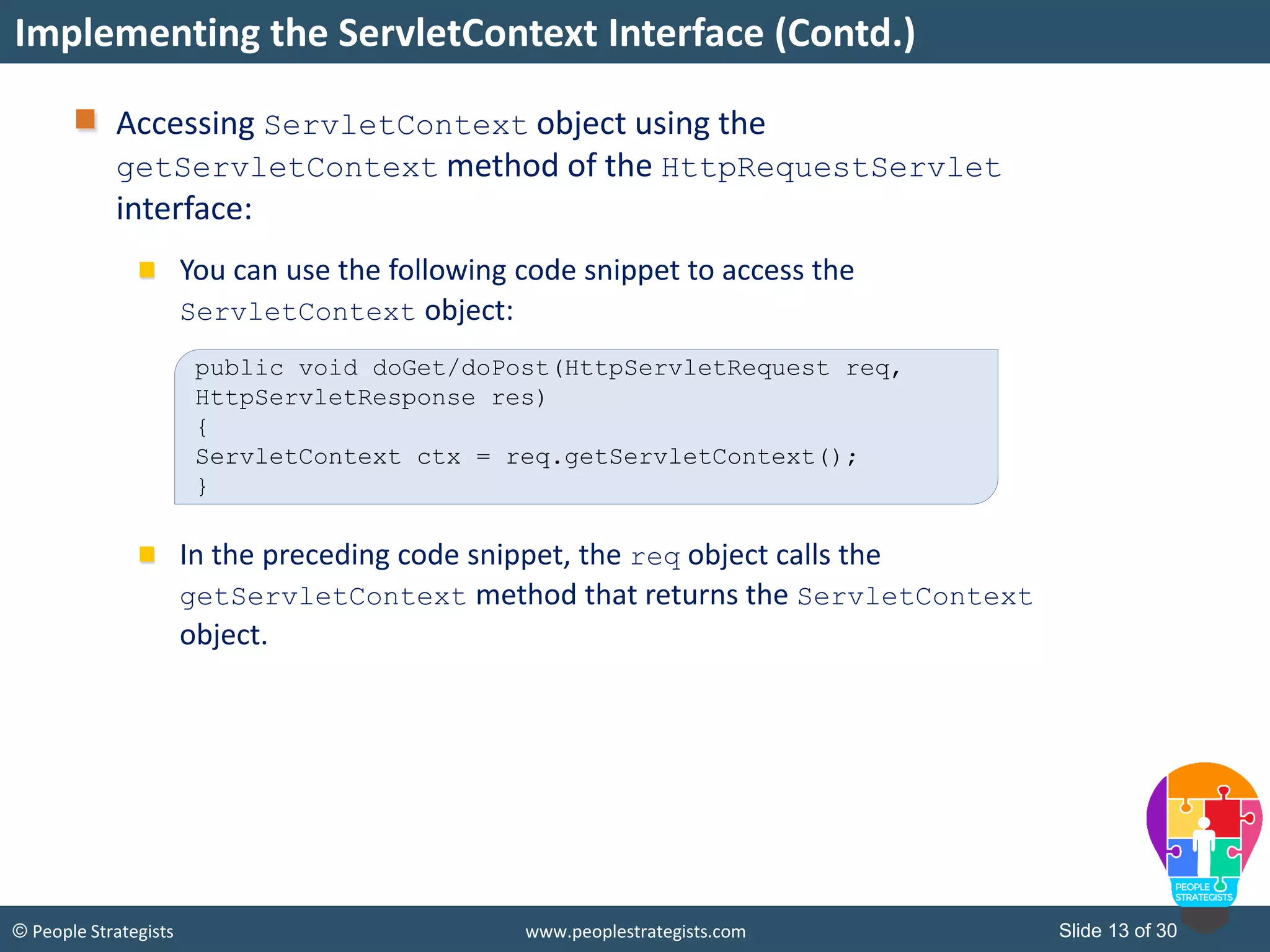
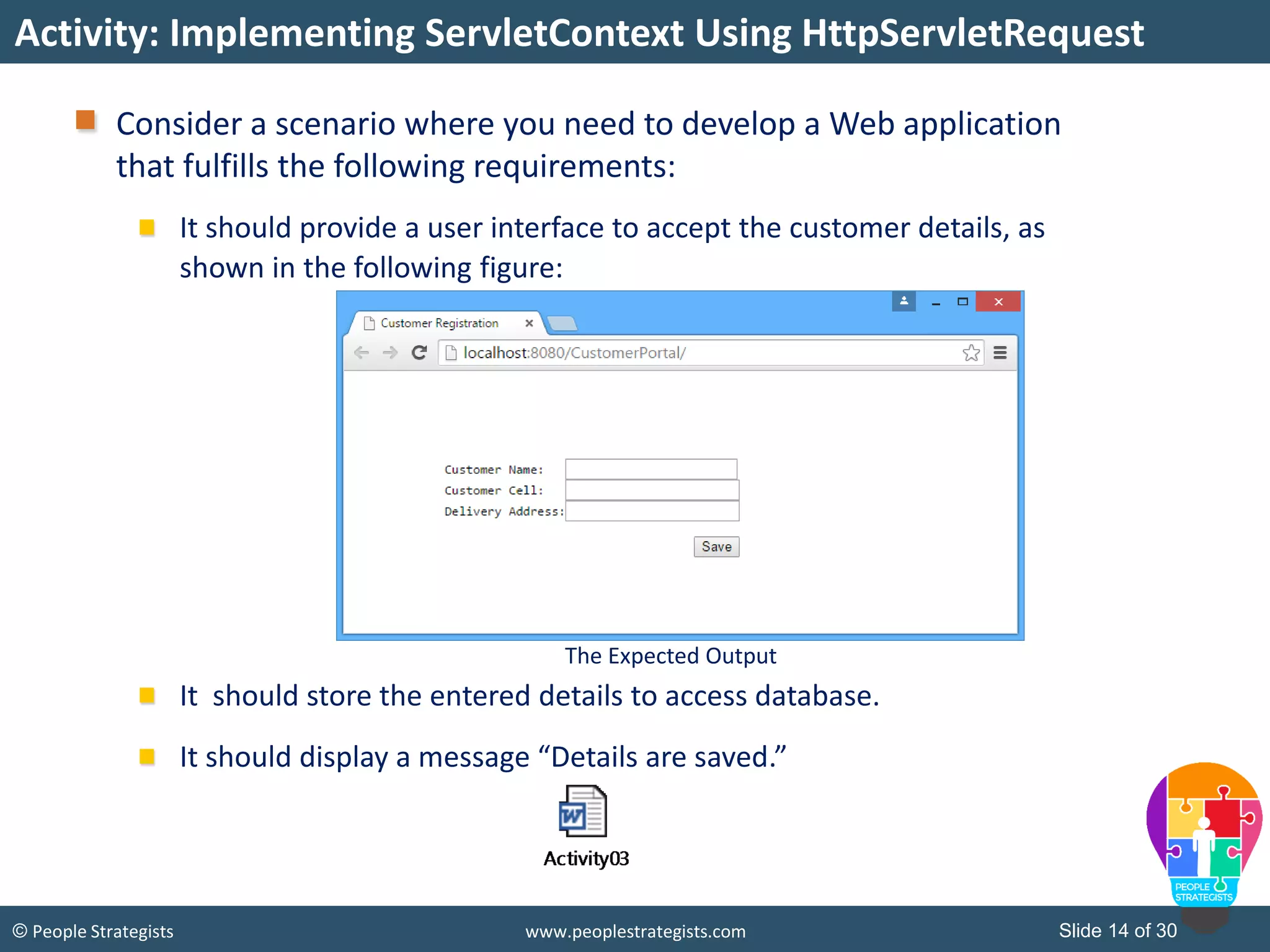
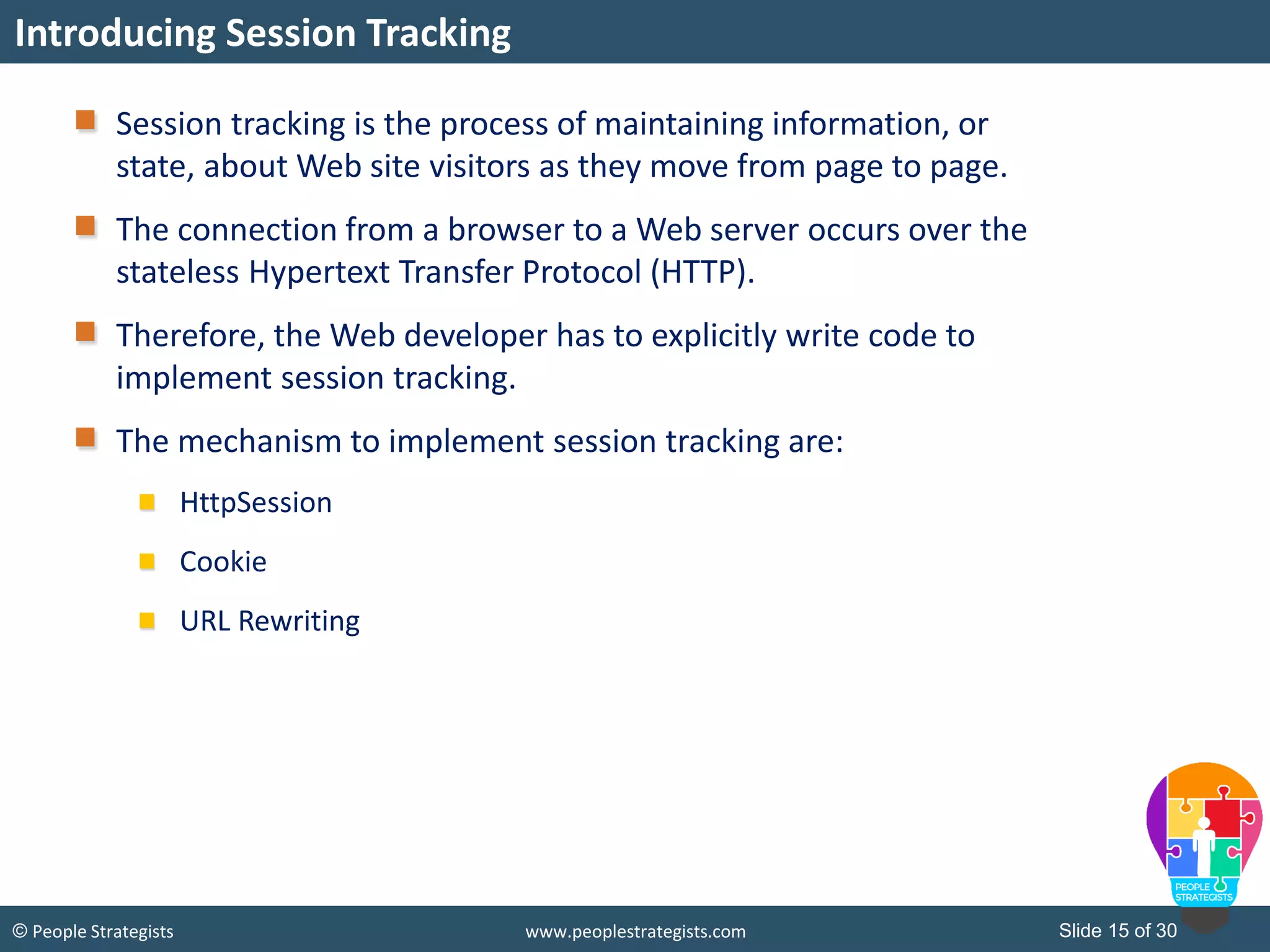
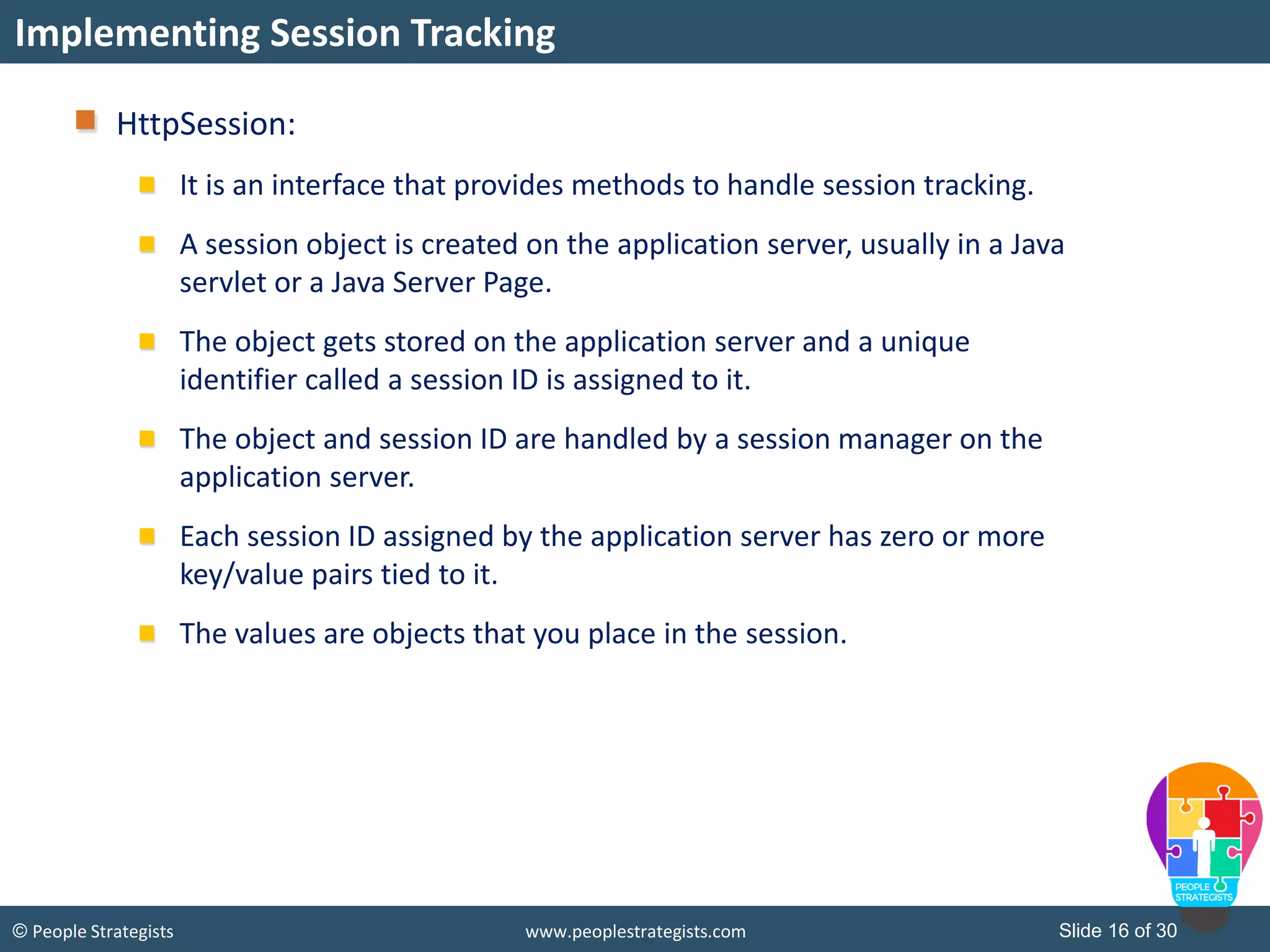
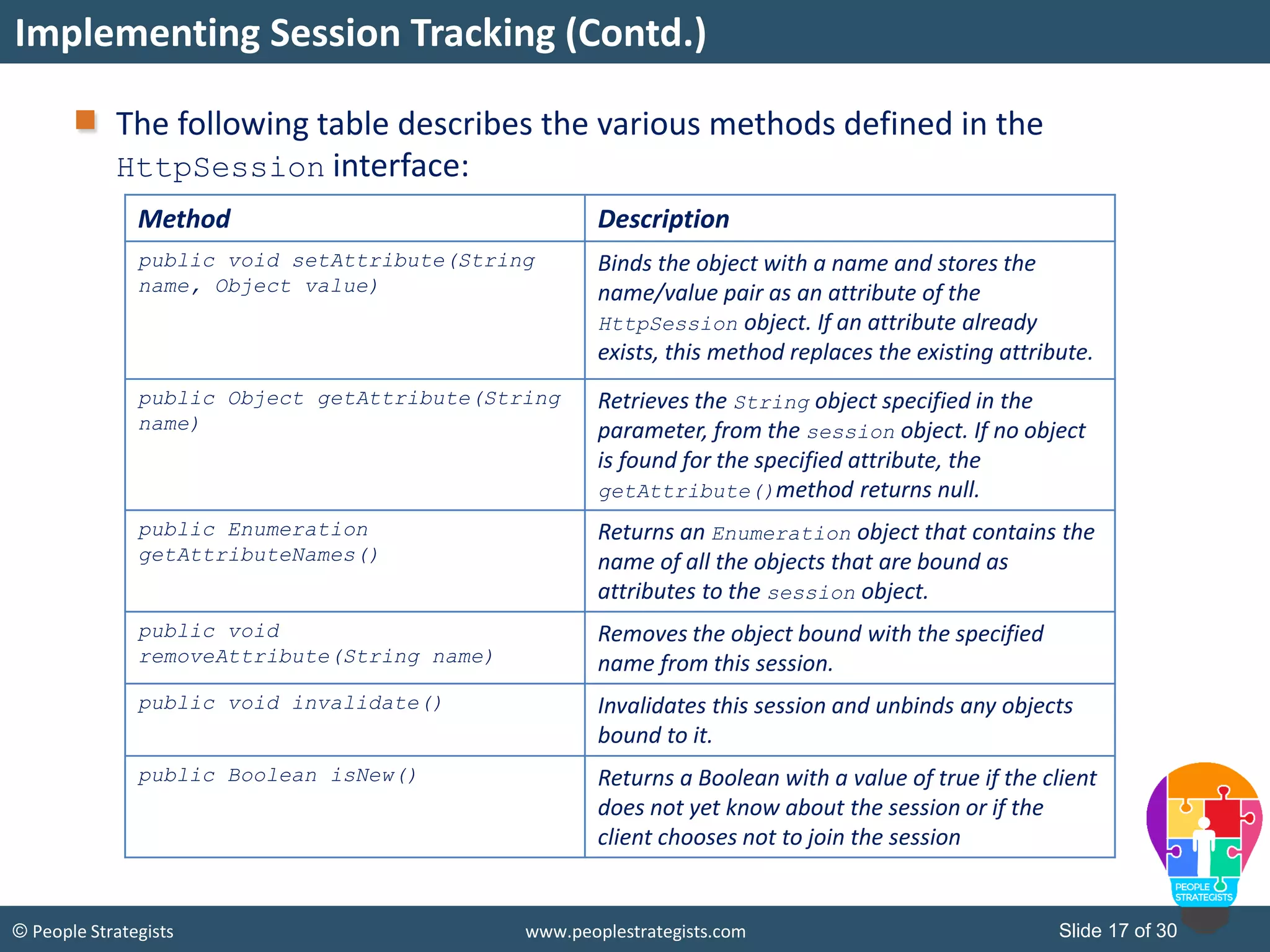
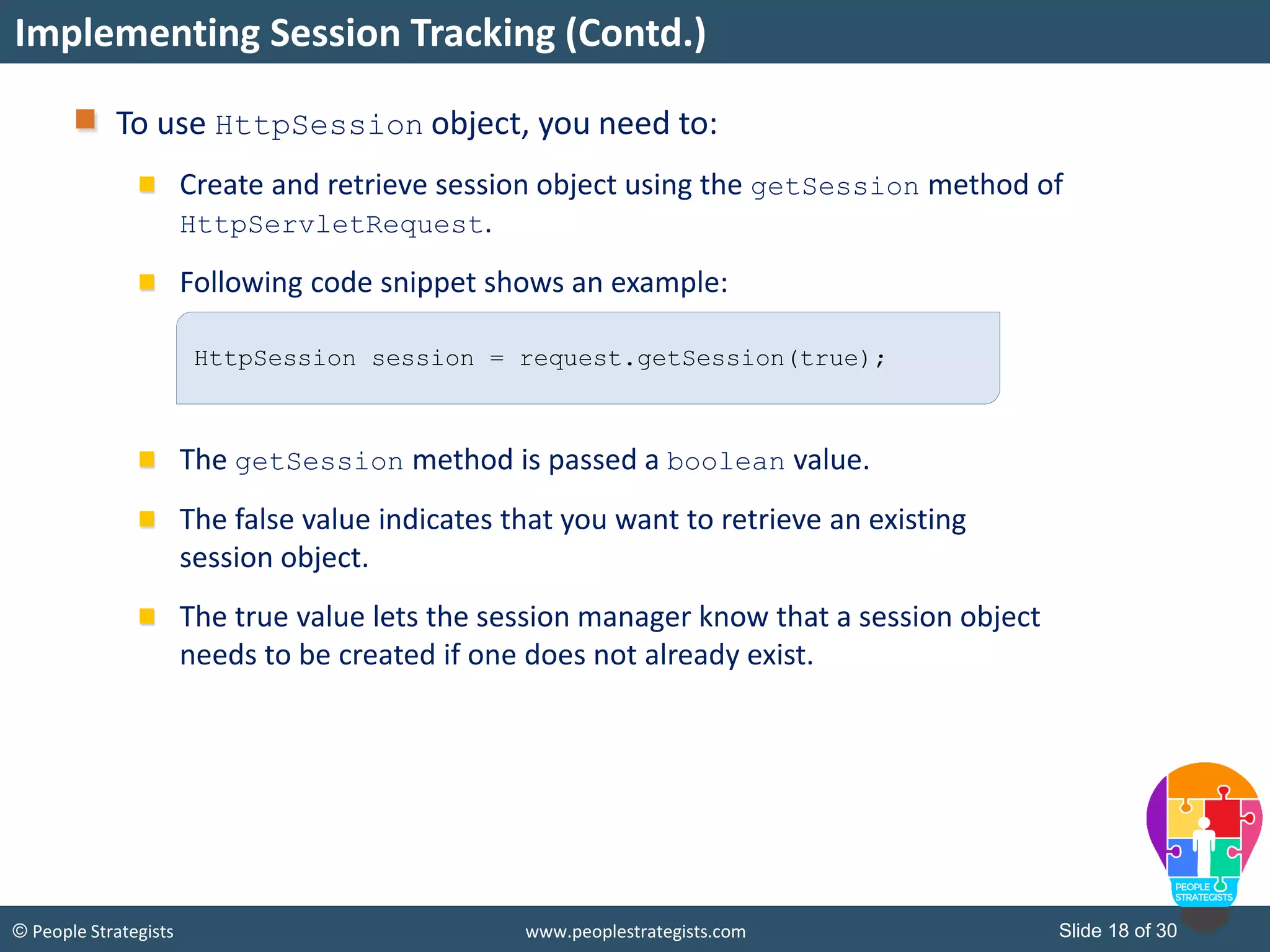
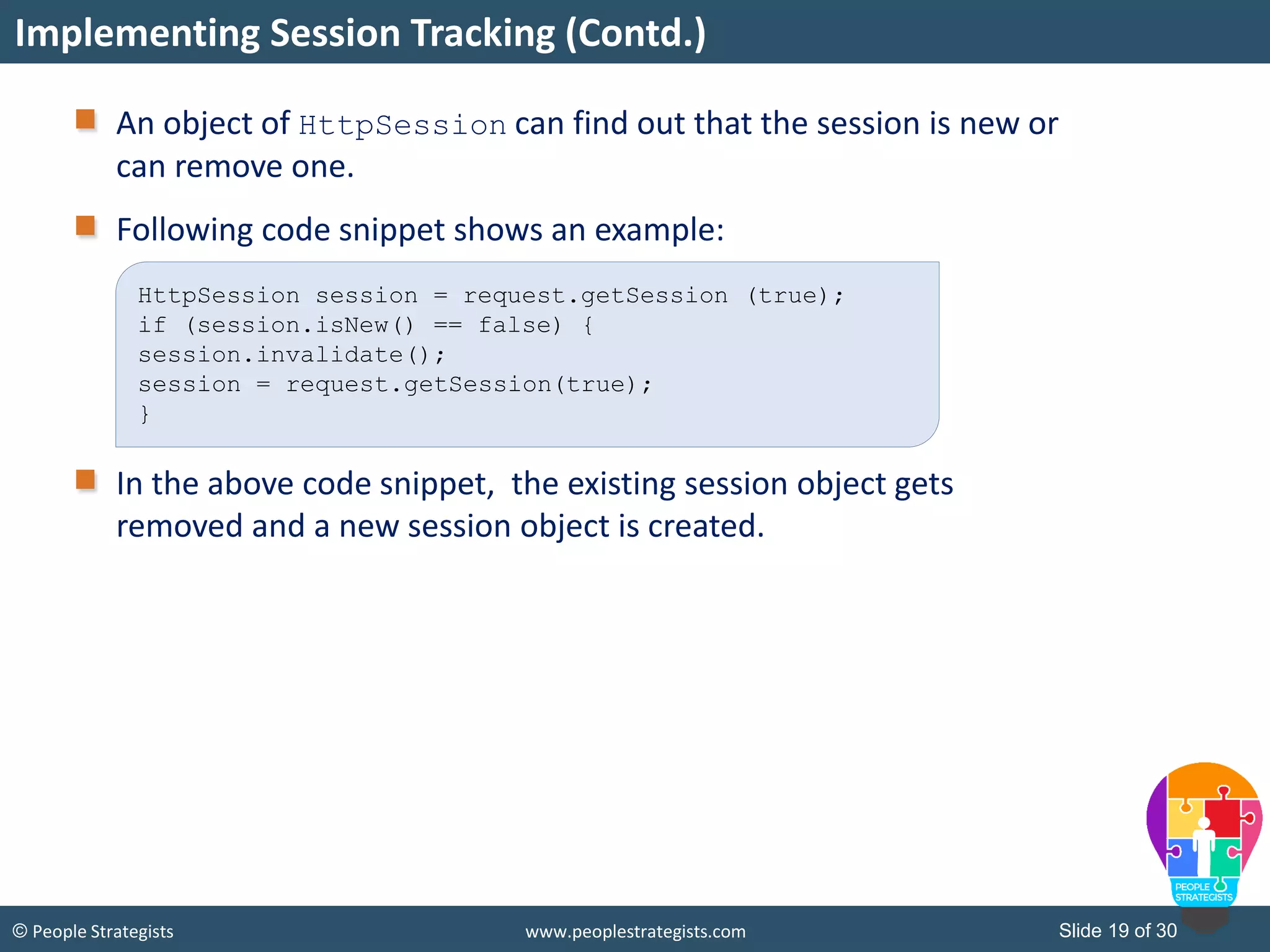
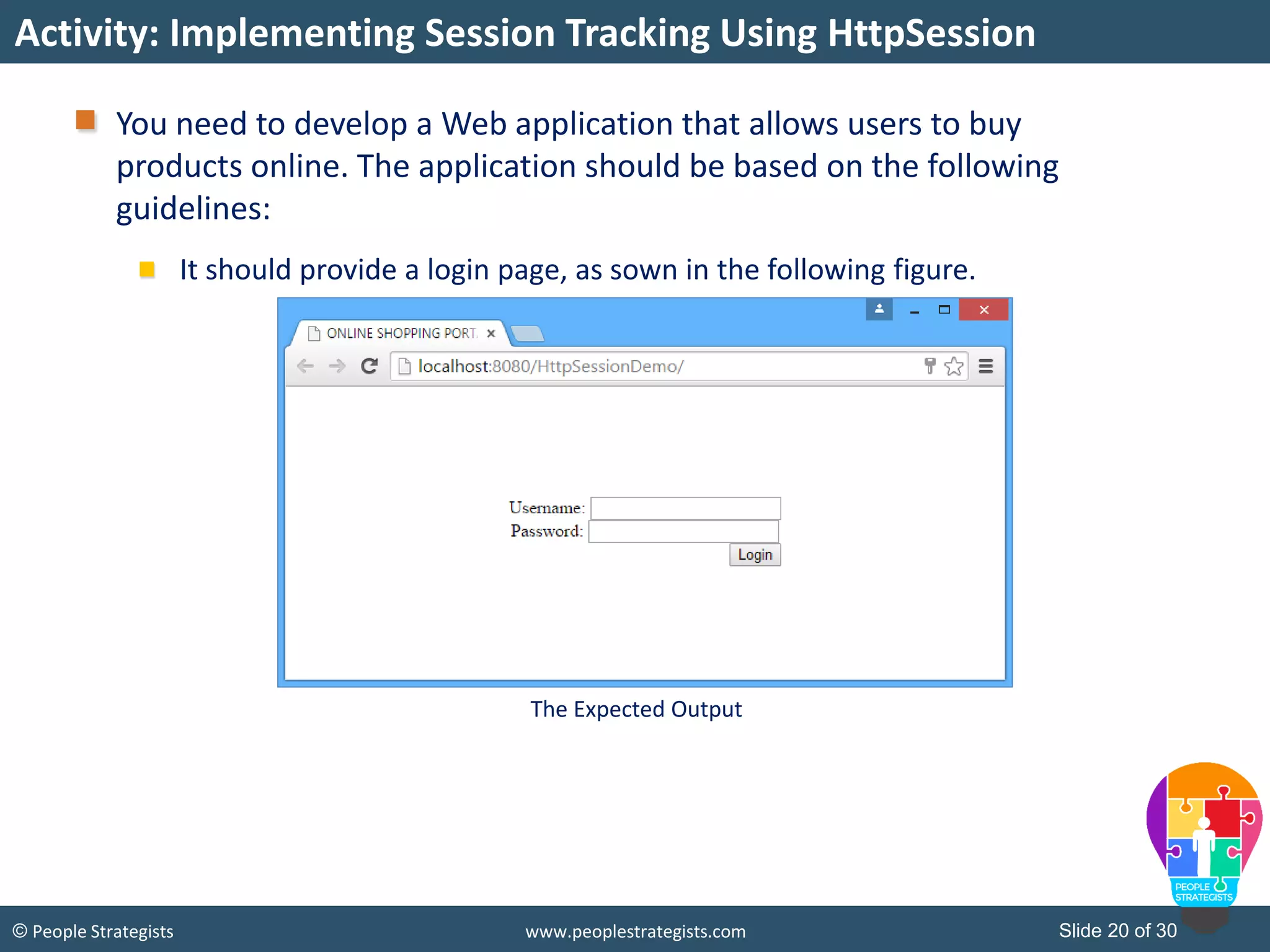

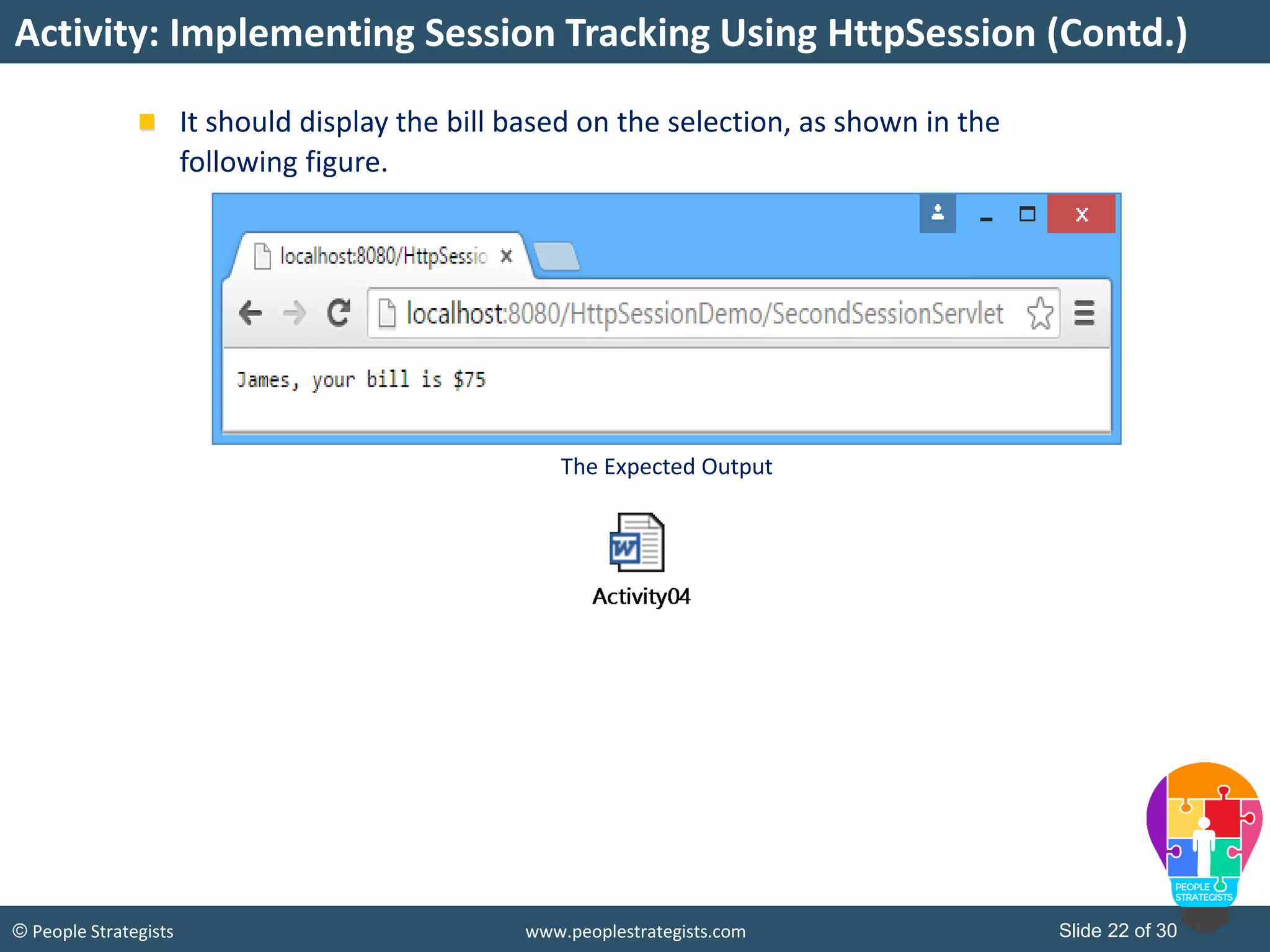

![Slide 24 of 30© People Strategists www.peoplestrategists.com
Following code snippet retrieves the Cookie object:
The getCookies method retrieves the stored cookies.
The getName method returns the cookie name.
The getValue method returns the value stored in cookie.
Implementing Session Tracking (Contd.)
String user = "";
Cookie[] cookies = request.getCookies();
if (cookies != null) {
for (int i = 0; i < cookies.length; i++) {
if (cookies[i].getName().equals("user"))
user =cookies[i].getValue();
}
}](https://image.slidesharecdn.com/workingwithservlets-150731042607-lva1-app6891/75/Working-with-Servlets-24-2048.jpg)

